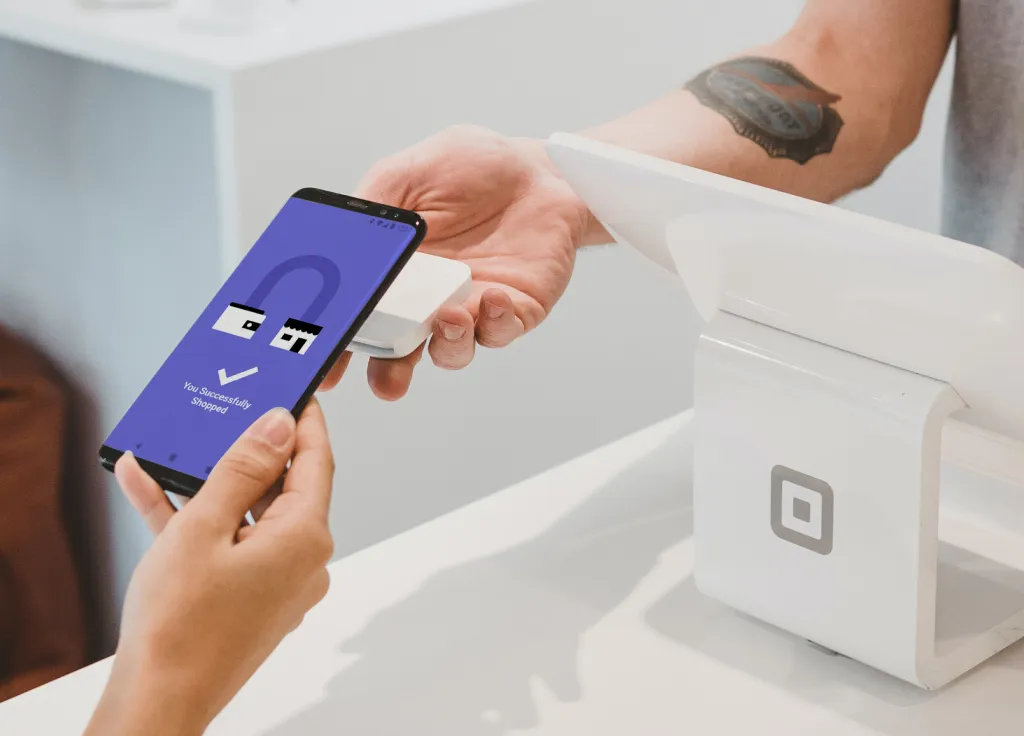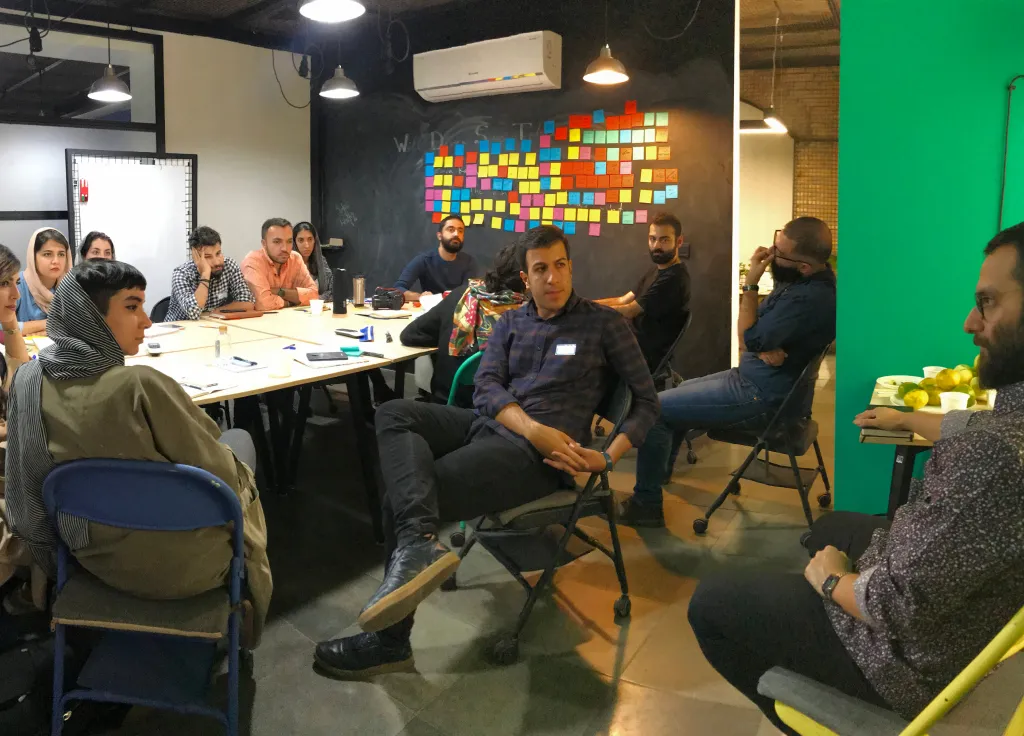Abstract
Problem Space
In this project, we tackled the persistent issue of scarce medication availability, which has long been a prominent challenge in Iran. Our decision to focus on this problem was driven by the strong alignment with user pain points, the company’s past successes, and its future strategic direction. Over the course of eight months, we diligently engaged in research and experimentation, guided by two influential books: “Continuous Discovery Habits” and “Testing Business Ideas.” To gain a systematic understanding of the problem and its systemic complexities, we first developed an ecosystem map, identifying the existing challenges within the system. After carefully selecting a problem within our project scope, we conducted extensive research and ideation, followed by iterative testing and refinement. The specific problem we chose to address was the gap between buyers and pharmacies. We designed value propositions for both parties involved, with pharmacies seeking leads and buyers desiring a seamless and time-efficient means of locating pharmacies with the required medication in stock.
Solution Space
To address the identified problem, we adopted a multifaceted approach, catering to both the buyer and pharmacy sides. For buyers, we developed a chat-based interface that fostered a personalized connection. Simultaneously, we tackled the challenge of obtaining real-time data from pharmacies. After testing various solutions, we found that automated calls proved to be the most efficient method. For every user request, our system automatically placed calls to pharmacies, identifying those with the required medication in stock. Subsequently, we seamlessly notified the user through our chatbot, facilitating a smooth and timely process. During the experimental phase, we received 17,000 user requests. Moreover, we achieved a commendable 52% search success rate, affirming our ability to effectively address users’ needs. Furthermore, our commitment to responsiveness is exemplified by our impressive response times, consistently under 10 minutes. These metrics collectively demonstrate the tangible impact we have made in mitigating the challenges associated with scarce medication availability.
My Roles: I played a crucial role in driving our human-centered problem-solving process. I facilitated numerous workshops, ranging from discovery and ideation to experiment design, while actively contributing to the research efforts. For the initial 5 months, I served as the sole researcher on the team. As a product designer, I took charge of interface design, shouldering the responsibilities of UI development and conversation design.
Research Methods: User Interview, Expert Interview, Contextual Inquiry, Fly on The Wall, Call Monitoring, Social Media Listening, Desk Research
Tools: Miro, Figma, Adobe Creative Suite
Initial Context
In this section, I will provide the initial context that led us to embark on the development of a personal assistant for the pharmaceutical industry. The convergence of four factors solidified our decision to develop a personal assistant for the pharmaceutical industry. These factors collectively demonstrated the relevance, necessity, and potential value of our solution, establishing a strong foundation for our journey in designing and implementing services to assist individuals in locating medicines efficiently.
1. Prior Experience in Assisting with Vaccination Location
Our company, had previously gained significant experience in helping individuals locate COVID-19 vaccination centers. Given the delayed arrival of the vaccine in Iran and the limited choice of vaccine brands, people faced challenges in finding the vaccination location that administered their desired vaccine, such as AstraZeneca. By collecting and continuously updating information, we facilitated easy access for individuals to find the nearest center offering their preferred vaccine. This experience established our credibility as a trusted brand and demonstrated our ability to assist people in locating essential services.
2. Impact of Economic Conditions on Product Availability
Iran’s political and economic conditions, compounded by sanctions, have contributed to the scarcity of various products, including essential items. Recognizing this trend, our company formulated a high-level strategy to develop a product that would address people’s needs in discovering available products and services. Given the necessity of medications for individuals’ well-being and the potential financial value for our company, we identified the pharmaceutical industry as a suitable and compatible focus for our design services.
3. Removal of Restrictive Pharmacy Laws and Increasing Competition
During the inception of our project, Iran had recently lifted a law that previously limited the number of pharmacies in specific regions. As a result, the number of pharmacies had significantly increased, leading to intensified competition among them. In their pursuit of attracting more customers and generating leads, pharmacies sought innovative ways to stand out. This presented an opportunity for collaboration with our personal assistant platform, as pharmacies recognized the potential benefits of partnering with us to enhance their visibility and customer acquisition.
4. High-Level Strategy: Implementation of Conversational UX
Another high-level strategy of our company, as a service provider in the field of maps, navigation, and driving assistants, was to design and implement a conversational user experience (UX) for users. Referred to as “Urban Assistant,” this top-level strategy served as a guiding principle for our interface design. By leveraging conversational UX principles, we aimed to create a seamless and intuitive user interaction that would enhance the overall user experience and make the personal assistant more accessible and user-friendly.
Approaches
Design Thinking Mindset
Embracing a design thinking mindset, we approached the project with a focus on understanding the needs of users and finding innovative solutions. Leveraging the IDEO Design Kit and Method Cards, we incorporated a diverse range of design tools and techniques to foster creativity, collaboration, and user-centered problem-solving.
Problem-Oriented & Experimental
By staying problem-oriented throughout the product development process, we remained focused on finding effective solutions to the challenges faced by individuals, ensuring our efforts were driven by tangible impact. Through iterative delivery, we iteratively tested and validated our hypotheses, allowing us to pivot and adapt our approach based on real insights.
Systematic Approach
Despite the intricate nature of the wicked problem, we approached it with a systematic mindset, breaking it down into manageable components and iterating on our solutions to simplify and streamline the user experience.
Continuous Discovery
The Continuous Discovery Habits book method empowered us to continuously learn, validate assumptions, and gather user feedback, enabling us to iterate and refine our solutions based on real-world insights.
Objectives
In this section, I will provide the initial context that led us to embark on the development of a personal assistant for the pharmaceutical industry. The convergence of four factors solidified our decision to develop a personal assistant for the pharmaceutical industry. These factors collectively demonstrated the relevance, necessity, and potential value of our solution, establishing a strong foundation for our journey in designing and implementing services to assist individuals in locating medicines efficiently.
Long-Term Impact (Vision)
Our solution empowers individuals in Iran to efficiently locate desired pharmacy products, resulting in time savings and reduced stress. By facilitating easy access to medications, we contribute to preventing potential health problems and reducing the risk of mortality in the country.
Primary Outcomes
- Pharmacies across Tehran collaborate and share real-time data.
- Users in Tehran rely on our product to find rare medicine, alongside existing solutions.
Key Shifts
- Traditional business owners experience a paradigm shift, recognizing the financial benefits of utilizing map and navigation applications.
- Pharmacies develop trust, understanding that our intention is to provide valuable data to users, rather than disrupt or inspect their operations.
- Shifting the perception among Iranian users, we aim to challenge the prevailing notion that Iranian applications are government-affiliated and inherently corrupt or inefficient. By earning the trust of users seeking medicine, our objective is to establish ourselves as a reliable and trustworthy platform, gaining their confidence to willingly share their information with us.
Important Note!
The precise problem framing presented in this section is a result of our thorough research and synthesis process. This clarity emerged after conducting our ecosystem mapping. For detailed information, please refer to the “Research: Synthesis” section.
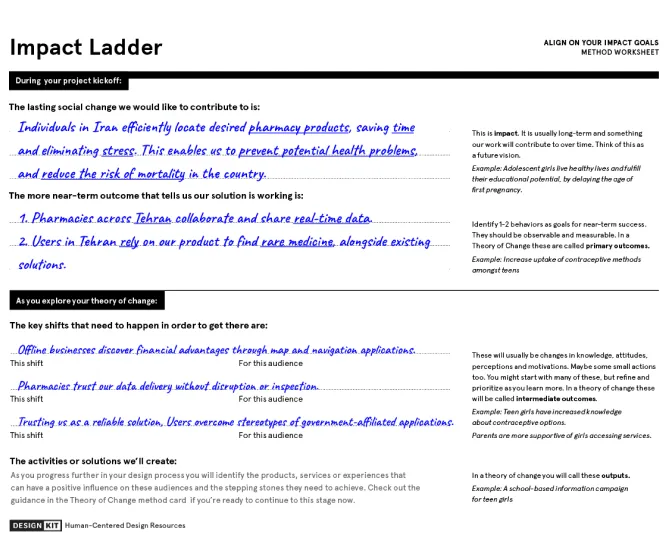
Success Metrics
By focusing on these success metrics, we were able to gauge the early impact of our experimental project, despite initial expectations of modest user engagement. This allowed us to refine our strategies, iterate on our solutions, and lay the foundation for future growth and scalability.
1. User Engagement
In our experimental project, we closely monitored user engagement as a key metric of success. While the project was in its early stages and the business did not set high expectations for user acquisition, we tracked the number of active users, their frequency of usage, and their overall satisfaction with the product. This allowed us to assess the level of engagement and validate the value proposition of our solution, paving the way for future growth and refinement.
2. Search Success Rate
A critical measure of our project’s effectiveness was the search success rate, which gauged how effectively users were able to find their desired medicines through our platform. By tracking the percentage of successful searches conducted via our solution, we were able to evaluate the efficacy of our pharmacy information system and its ability to provide real-time information on medicine availability. This metric helped us identify areas for improvement and ensure that users could swiftly locate the medicines they needed.
3. Pharmacy Collaboration
An essential aspect of our project was establishing partnerships and collaborations with pharmacies. We recognized the importance of gaining their trust and cooperation to ensure accurate and up-to-date information for our users. We tracked the number of pharmacies willing to collaborate and share their real-time data, indicating the value they saw in our solution and their willingness to contribute to the collective goal of improving access to medicines.
Research: Insight Gathering
In our initial research phase, our focus was on gaining empathy and understanding the complex system surrounding the issue at hand. To achieve this, we primarily used qualitative research methods. These methods allowed us to gather rich insights and deep contextual understanding of the experiences and challenges of stakeholders involved.
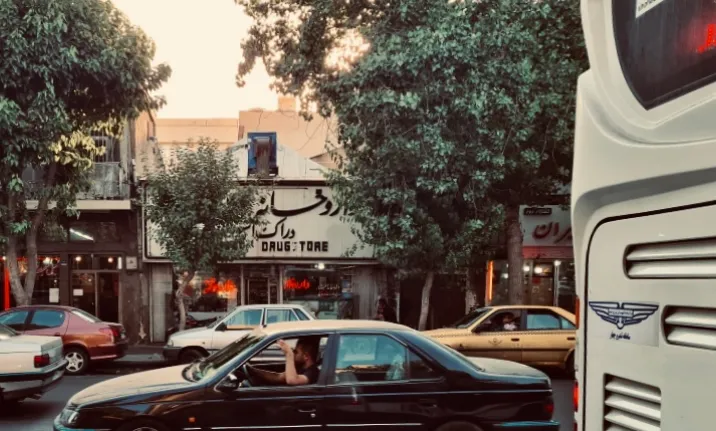
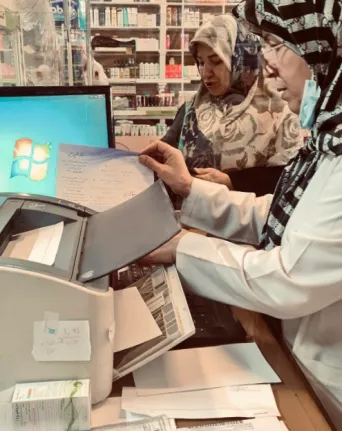
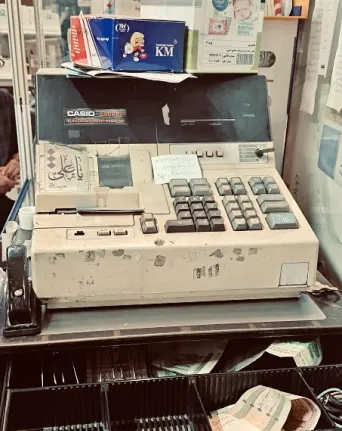
User Interview
During our primary user interview phase, we engaged in insightful conversations with approximately 15 individuals representing diverse age groups and personalities. Employing deep interview techniques, we utilized a semi-structured approach where we had a set of designed questions but remained open to exploring their unique experiences and journey. Initially, we recruited interviewees from our network and social media, and subsequently expanded our reach by including users from our app’s real user base.
Expert Interview
Throughout our insightful engagement with industry experts, we fostered informative discussions with 10 accomplished individuals in the field. Our expert panel consisted of a diverse range of individuals, including pharmacy owners (our prospects), pharmaceutical sales experts, and researchers specializing in the pharmaceutical domain. While we had a set of designed questions, our interviews followed a semi-structured format, allowing us to delve deeper into their professional journeys and gather valuable insights.
Contextual Inquiry
As part of our contextual inquiry, we engaged in immersive field visits where every member of our team, from researchers to engineers, actively participated. During these visits, we had the opportunity to personally connect with pharmacy owners, gaining valuable insights into their daily operations, challenges, and interactions with customers.
Fly on the wall
During selected observations, we adopted an unobtrusive approach, acting as silent observers in the pharmacy setting. By immersing ourselves in the environment without active participation, we aimed to capture authentic and unfiltered behaviors, interactions, and workflows of both pharmacy staff and customers.
Call Monitoring
We implemented a call monitoring system to gain insights into pharmacy challenges and quantify drug shortage issues. This involved recording and analyzing phone calls to understand user problems and measure the frequency of drug shortage inquiries. The approach combined qualitative and quantitative methods.
Desk Research
We employed social media listening to gather insights from online discussions, forums, and comments. By monitoring relevant hashtags and user-generated content, we gained a deeper understanding of people’s experiences and needs regarding medicine availability. This input addressed specific user perceptions and behaviors, and informed the refinement of our product.
Research: Synthesis
During the mapping and synthesis phase, our team engaged in collaborative sessions following each research task. Utilizing digital tools like Miro, we consolidated our findings, shared valuable insights, and observed patterns within the data. Employing a range of mapping methods such as thematic analysis, ecosystem mapping, experience mapping, and the iceberg model, we distilled the wealth of information gathered into meaningful visual representations. These mapping techniques enabled us to make sense of the complex landscape, identify key relationships, and uncover underlying factors contributing to the medicine shortage issue.
Ecosystem Map
In tackling a complex systematic problem, we found ourselves faced with the challenge of where to begin. Our primary goal was to address this problem and provide effective solutions for our users, but the sheer complexity demanded a comprehensive understanding of the entire system. To gain a holistic perspective and identify the key problem areas, we embarked on an extensive mapping exercise. This allowed us to visualize the bigger picture and systematically map out every issue we had uncovered through our research efforts. By mapping the challenges within the system, we aimed to streamline our decision-making process and identify specific areas where our interventions could have the most significant impact.
Framing the Problem
While the principles of systems thinking and social innovation emphasize addressing root causes and tackling systemic issues, our project encountered a unique challenge. The root causes of the problem we aimed to solve were beyond our authority and scope of influence. However, recognizing the pressing need to make a meaningful impact, we strategically focused on a specific area within the system: the relationship between pharmacies and patients. By zooming in on this crucial interaction, we aimed to address the pain points and inefficiencies that users face in accessing real-time data and navigating the associated costs. These costs encompass not only the waste of time and friction experienced by patients but also the potential health threats that arise from delayed access to essential medications. Through our efforts, we sought to enhance this critical relationship and alleviate the burdens placed on patients, ultimately creating a more seamless and patient-centric healthcare experience.
Note!
From here, as you may recall from our earlier discussion, we continued by completing the “Impact ladder” worksheet, through which we defined our success metrics.
Opportunity Evaluation
During the opportunity evaluation phase, we carefully assessed various criteria to determine the viability and potential of the identified opportunity.
- Firstly, we conducted opportunity sizing by analyzing the number of customers affected and the frequency of their need for rare medications in Iran. This helped us gauge the scale and urgency of the problem.
- Next, we considered market factors, evaluating how addressing this opportunity would position us against competitors and align with external trends.
- We also prioritized opportunities that aligned with our company’s vision, mission, and strategic objectives, ensuring that our efforts were in line with our overall direction.
- Lastly, we examined the importance of the opportunity to our customers and their satisfaction with existing solutions.
This holistic evaluation process provided us with valuable insights and guided us towards focusing on this opportunity to address the pressing needs of both patients and pharmacies in the rare medicine market.
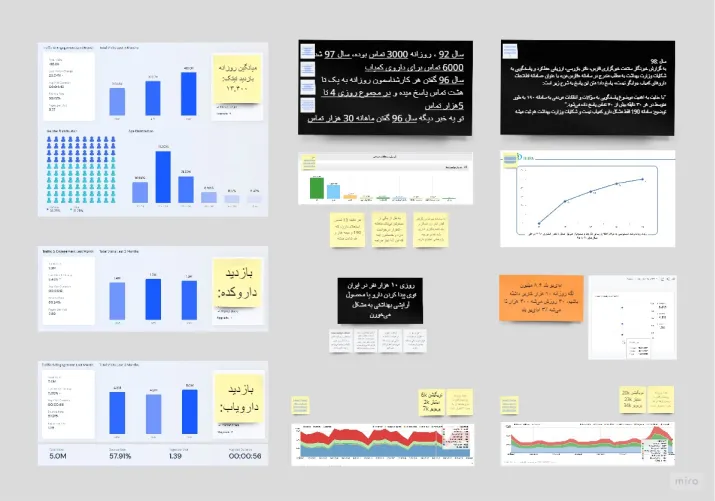
Thematic Analysis
After conducting a thematic analysis on hundreds of insights gathered from our research, several key themes emerged. These themes were carefully translated into insight statements that capture the essence of users’ experiences and elicit empathy. Each statement represents a unique perspective and sheds light on the challenges faced by individuals.
Patient Side Insight Statements:
- I never expected this medicine to be so hard to find. I thought it would be easy, but it turned into a real hassle and made me anxious.
- No matter how much I searched, I couldn’t find it anywhere. Eventually, I had to turn to Twitter and Instagram to find someone who could help me get the medicine.
- Some pharmacies were not honest with me. They claimed they didn’t have the medicine, but later I found out they actually did and sold it to someone else. Can you believe that? It’s like they save the medicine to sell it at a higher price or only to their friends.
- They offered me an Iranian version of the medicine, but it just didn’t work for me. I tried it, but it didn’t have the same effect.
- I tried searching on the internet and using government systems, but it was all in vain. I couldn’t get any useful information.
- My family and I carried a photo of the prescription everywhere we went. We showed it to pharmacies, hoping someone would have the medicine.
- We had a friend who worked in the medical sector, and they helped us get the medicine.
- In the end, I found a place that sold me the medicine, but they charged me several times the original price. It was really frustrating.
- I called different pharmacies from the map to check if they had the medicine.
- I discovered that the pharmacy only gave me a small amount of the medicine because they said it was rationed. It was less than what I needed.
Pharmacy Side Insight Statements:
- A significant portion of scarce drugs are obtained through smuggling, but selling them to unfamiliar individuals poses risks that we must consider.
- Providing the rare medicine to strangers may lead to dissatisfaction among my regular customers. As a pharmacist, I have a responsibility towards my loyal clientele.
- I am opposed to online sales due to the vital role of pharmacist supervision and the need for direct communication. It is crucial for the pharmacist to have control over checking drug interactions, side effects, and providing essential information to patients.
- The increasing number of pharmacies and the transformation of pharmacists into employees of capitalist entities raise concerns about the professional dignity of pharmacist doctors. A pharmacy should not resemble a grocery store or a fruit shop, with establishments scattered every few meters.
- People often express complaints without considering the immense workload of answering numerous inquiries from patients on a daily basis.
- Today, there may be a scarcity of one medicine, and tomorrow, it could be another. These shortages persist, and that is why we must maintain a stock of certain medicines to avoid future problems.
Patient Side: Experience Map
This experience map aims to capture the journey of patients, highlighting their emotions, challenges, and key touchpoints throughout the process. It provides a holistic overview, organized into three general phases, rather than diving into intricate details. It is important to note that this experience map is product/service agnostic, focusing on the overall user experience. The main emotions and mental states observed in patients include wonder, anger, frustration, helplessness, hopelessness, and fear.

Pharmacy Side: Empathy Map
The following empathy map is designed specifically for the pharmacy side of our case study. It serves as a general framework to help us gain a deeper understanding of pharmacies and how we can create value for them, ultimately providing valuable data for our users. Please note that this empathy map is not tailored to a specific persona but rather serves as a comprehensive tool to uncover key insights. By exploring the pains and gains experienced by pharmacies, we were able to develop a compelling value proposition hypothesis for our product.
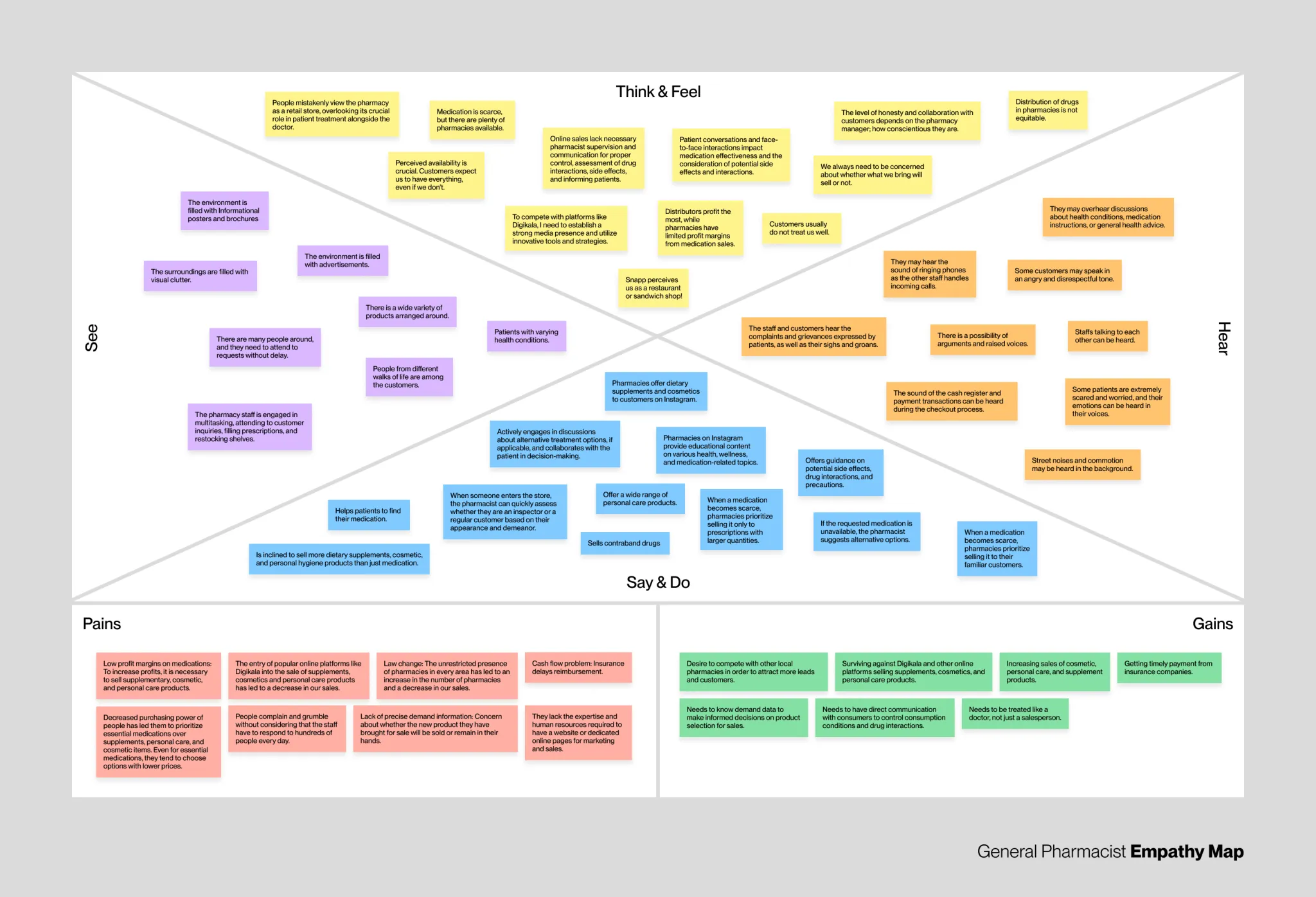
Moving Forward
Our initial research phase has come to a close, as we have successfully identified the specific product we aim to develop and the values we intend to deliver to both our users and pharmacies. This comprehensive understanding has enabled us to formulate a clear value proposition hypothesis. Building upon this foundation, we have begun ideating and testing various solutions in order to validate their effectiveness. Moving forward, we embraced an agile approach, engaging in iterative cycles of discovery, experimentation and refinement. For further information visit “Continuous Discovery” section.
Value Proposition
This section introduces our value hypotheses, which are based on the true needs and desires discovered during the research. These hypotheses aim to create value for both patients and pharmacies, addressing the requirements of both sides of the market. The following steps involved ideation and experimentation cycles to validate these hypotheses.
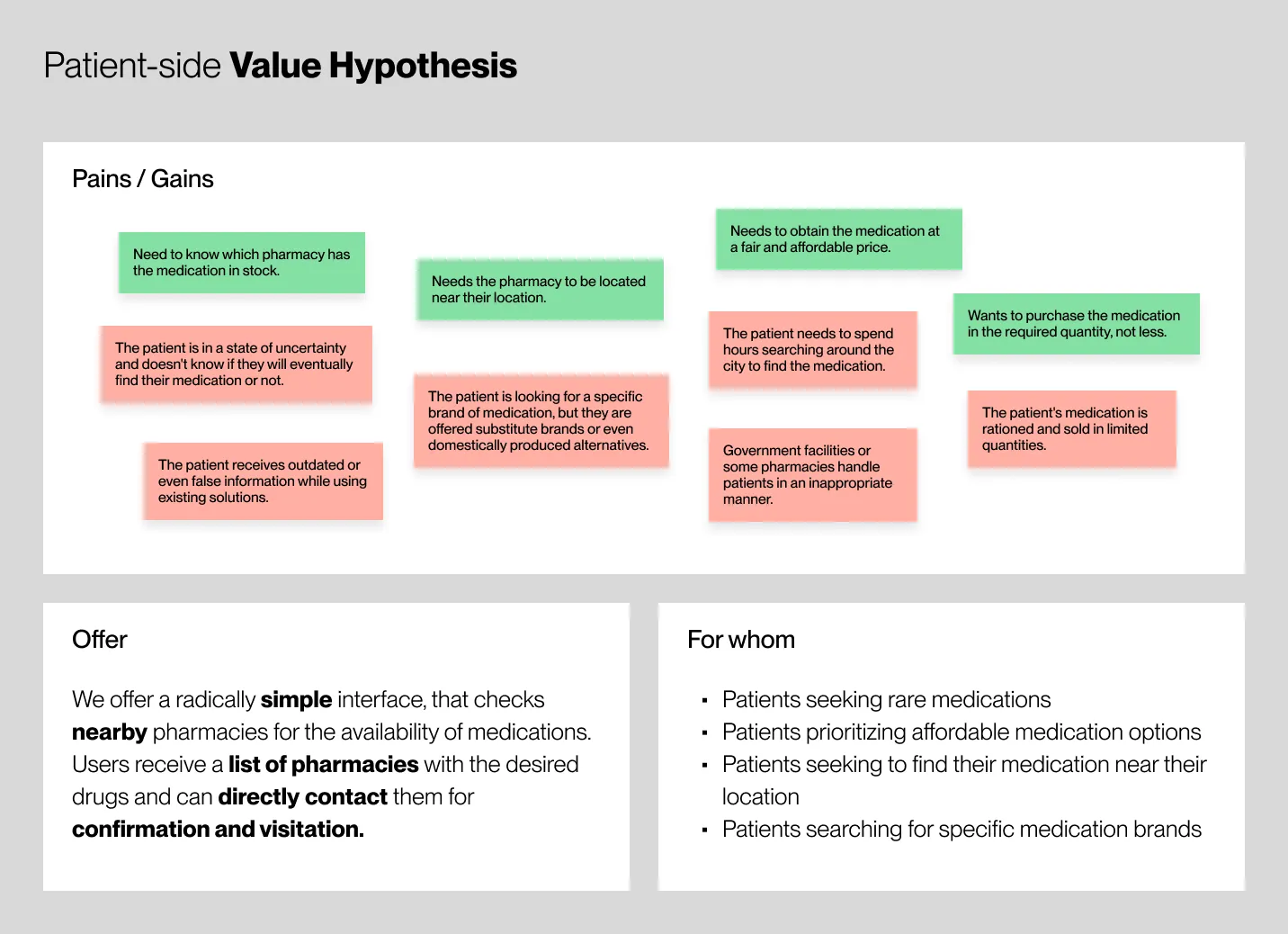
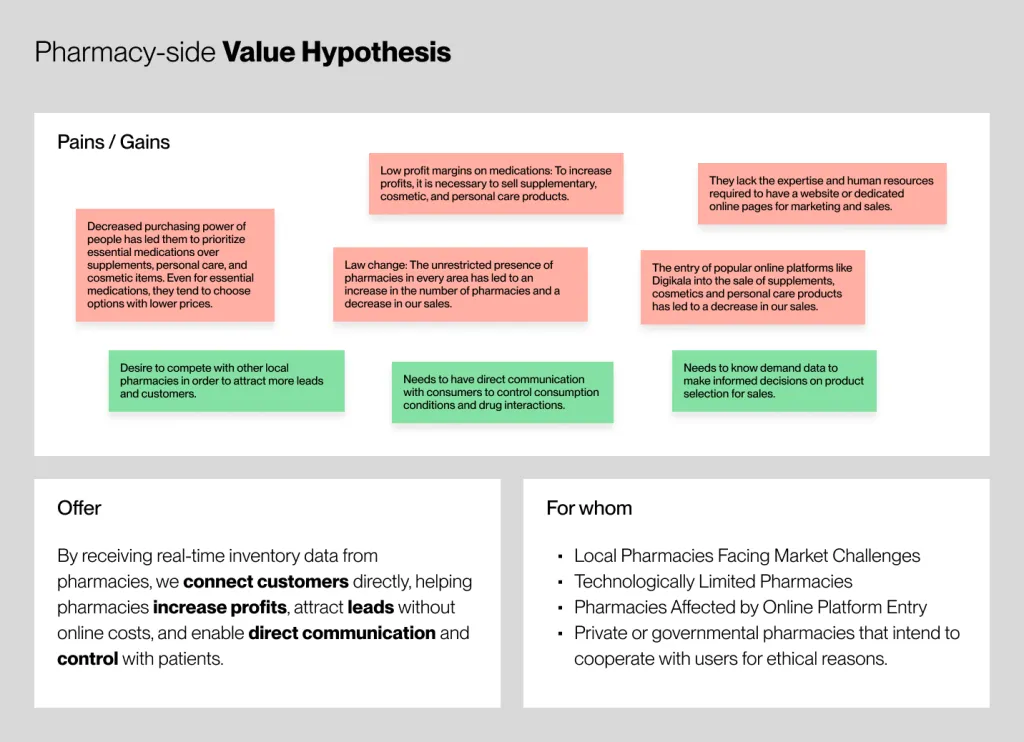
Solutions & Experiments
Throughout our journey, we embraced a rapid experimentation approach to tackle the challenges we encountered. We held frequent ideation sessions, generating a multitude of innovative ideas to address the needs of the rare medicine market. Each idea was carefully prototyped and tested with real pharmacies, allowing us to gather valuable insights and refine our solutions. While we explored various concepts, a selection of our tested solutions will be highlighted in this section.
1. Integration with Pharmacy Inventory Management Systems
The idea was to directly connect with the inventory management systems used by pharmacies, allowing us to have real-time access to their inventory data. We tested this idea with several pharmacies and encountered the following challenges:
- Not all pharmacies had accurate and up-to-date inventory information, especially for rare medications that were not properly recorded in their systems.
- Some pharmacies were reluctant to grant us full access to their information. Control over their inventory was important to them, and they preferred to provide updates on their own terms.
2. Manual Inventory Submission by Pharmacies
After realizing that pharmacies were reluctant to provide real-time inventory and preferred to maintain control, we decided to test another idea based on their suggestion. We provided them with a weekly list of user requests and asked them to indicate which medications they had in stock. This idea was also tested with several pharmacies, but it presented serious challenges:
- Filling out a large number of medication entries on the list proved to be time-consuming and burdensome, resulting in a limited willingness from pharmacies to complete the task.
- Not all user requests were covered in these lists, leading to potential gaps in available medications.
- Most importantly, the inventory submitted was only valid for one week and was not always up to date, resulting in errors and inaccuracies.
3. Crowd-sourcing Information
In our research, we observed that individuals in the community were willing to help each other by recommending pharmacies through various platforms such as Instagram and Twitter. However, this solution posed serious challenges in practice:
- Response time to users (which was one of our metrics) was often lengthy and difficult to control.
- In our experiment, where we set up a forum-like platform, it became evident that a significant number of topics remained unanswered, leading to unanswered user queries and incomplete information.
4. Designing a Mobile or Tablet Interface for Real-time Information Retrieval
The idea was to provide pharmacies with a user-friendly interface on their mobile or tablet devices, where they would receive user requests and promptly update their inventory status. Surprisingly, this idea garnered significant interest from pharmacies. However, contrary to our expectations, most pharmacies preferred using their mobile phones instead of installing a tablet on their walls. After testing with pharmacies, this idea received significant interest and was considered highly promising. To compare it with Idea #6 and assess its effectiveness, we subjected it to an A/B testing process, which will be explained later.
5. Automated Calling to Pharmacies
In this idea, whenever we received a user’s request, we automatically and simultaneously called several nearby pharmacies, and if they had the requested medication in stock, they could inform us by pressing button 1. Initially, we considered this idea as a low-tech solution that might not garner much interest. After realizing that this idea resonated well with a number of pharmacies, we decided to conduct an A/B testing process to further evaluate the effectiveness of our communication model with pharmacies.
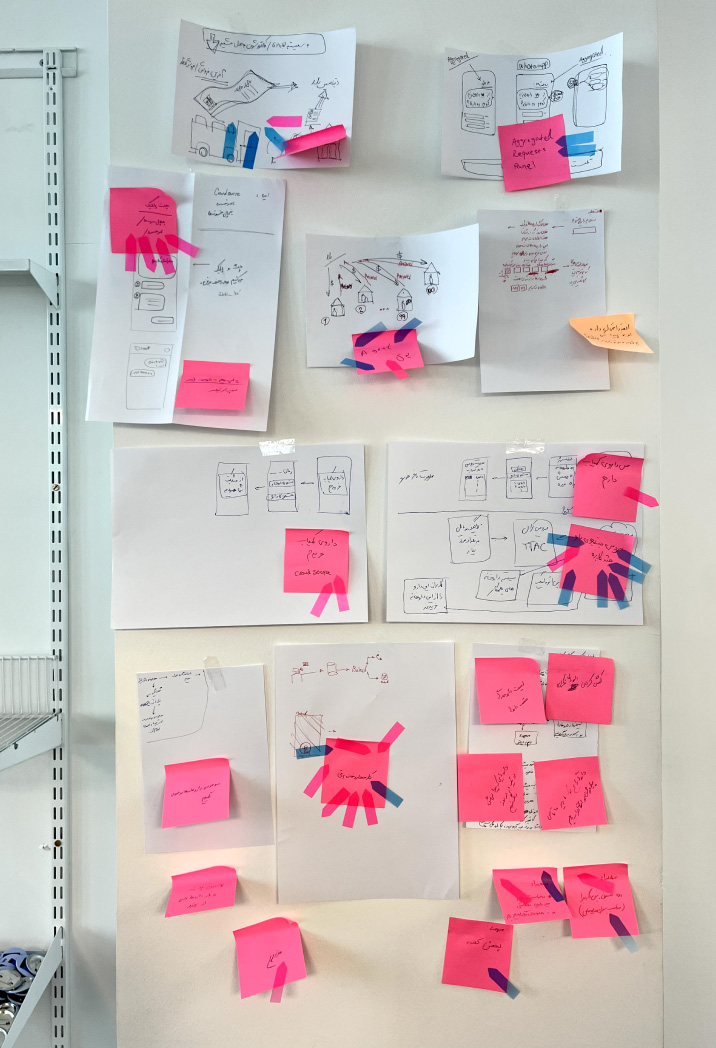
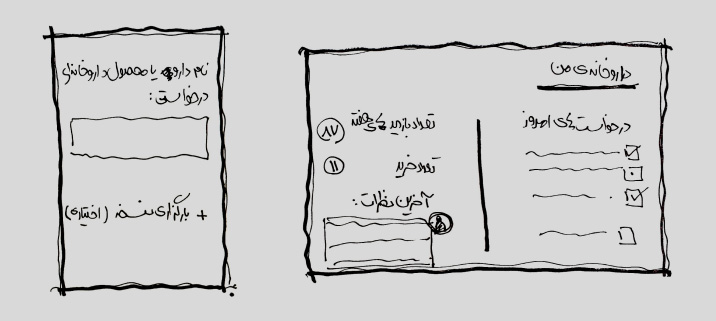
Final Experiment: A/B Testing
In the end, we presented Ideas #4 and #5 to two groups of pharmacies and sent them drug requests over a three-week period. Surprisingly, we discovered that the automated call idea performed better than Idea #4, contrary to our expectations. Consequently, we decided to proceed with Idea #5 and continuously iterate on it to improve its effectiveness. Through this A/B testing, we learned several key insights:
- Automated calls allowed us to provide responses to users at a much faster pace.
- Despite pharmacies expressing their willingness to check the panel in Idea #4, in practice, they only checked the panel once every few hours and were occupied with other tasks.
- Contrary to our expectations, most pharmacies had a limited inclination towards adopting new technologies and preferred using traditional phone calls. They argued that their duty was to answer phone calls, and they would respond to our automated calls as well. Some pharmacies even had designated individuals specifically assigned to answer phone calls.
- The drawback of automated calls was that it could handle fewer requests compared to the panel. However, we addressed this issue by capturing the responses from pharmacies in each region, effectively resolving the problem.
- Moving forward, one of our product metrics became “How many calls does it take to locate a user’s requested drug?” Lowering this number made our process more efficient.
Interface Objectives
Radical Simplicity
We recognize that our user base will consist of individuals from various cultural backgrounds and age groups, particularly considering the nature of medication and illnesses. Many of our users may be older adults, who may not be as familiar with technology or have limited digital literacy skills. Additionally, given the emotional states that users may be experiencing, such as frustration, anger, or despair, it is crucial to minimize cognitive load and avoid overwhelming them with complex interface elements.
Scalability
Considering our company’s high-level strategy of market expansion and diversification through the discovery of rare products and services, we needed to design an interface that can accommodate not only medications but also other relevant products. Our company’s plan includes entering verticals beyond the rare medicine problem once it is addressed. Therefore, our interface should be flexible and adaptable to cater to the needs of different product categories and verticals.
Flexibility
To solve the medication problem, we needed to iterate and experiment with different approaches. This meant that the data we collected from users and the information we provided to them could change frequently, and new pathways may emerge. Therefore, it was essential for our interface to be adaptable and capable of accommodating these changes without requiring frequent product updates.
Inclusivity
Inclusivity was a key focus in designing our interface, especially considering the presence of various medical conditions and the possibility of users with disabilities. We aimed to ensure that our interface is accessible and inclusive to accommodate the diverse needs of our target users. By considering the challenges and limitations that individuals with disabilities may face, we strived to create an interface that provides equal access and a seamless user experience for all.
Interface Strategy
Design Principle: Help Like a Friend Helps
In our interface strategy, we adhere to the principle of “Help Like a Friend Helps.” This principle guides our approach to assisting users with empathy, flexibility, and transparency. We believe in embracing the user, creating an environment where they feel understood and supported. By incorporating this principle into our design, we aim to foster trust and establish a strong bond with our users, ensuring that they feel confident and comfortable throughout their interaction with our interface.
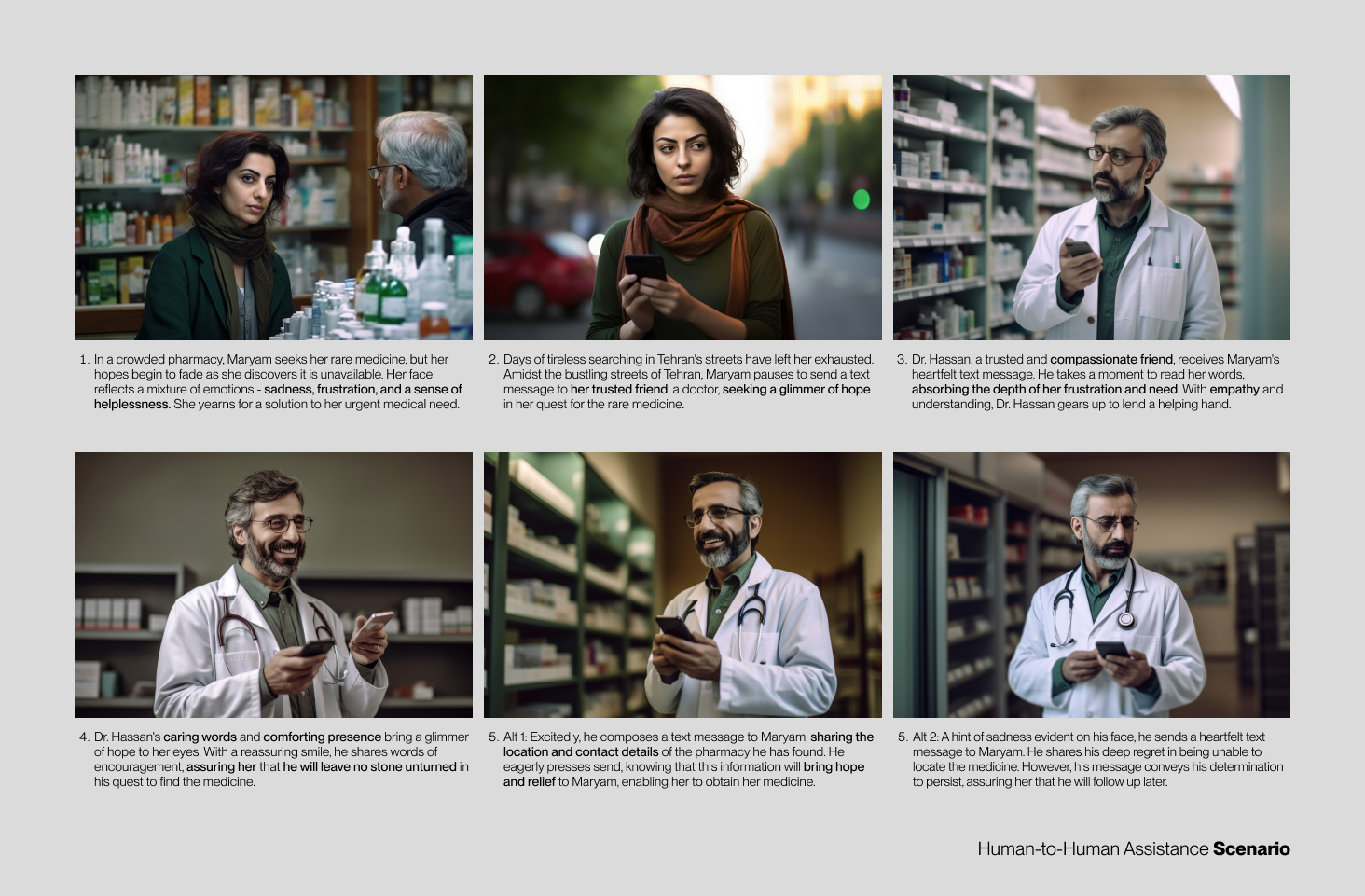
Conversational Interface
We adopted a conversational interface as our strategy for several reasons. Through this strategy we achieve an intuitive, scalable, and flexible solution that leverages familiarity, enables iterative experimentation, and ensures inclusivity for our users.
- Intuitive and Easy to Use: The conversational interface is intuitive and user-friendly, making it accessible and easy to use for everyone.
- Leverage Familiarity: Many elderly individuals in Iran, who may be less familiar with technology, already use popular messaging apps like WhatsApp and Telegram. By adopting a conversational interface, we can leverage their mental model and provide a seamless user experience.
- Scalability and Flexibility: Developing a conversation system allows us to scale and adapt it to different contexts and verticals, saving development time and ensuring consistency across our services.
- Iterative Experimentation: The conversational interface enables us to make edits and experiment with different flows quickly and easily. We can iterate and optimize the user experience based on real-time feedback.
- Achieving Inclusivity: By incorporating voice-based conversational interfaces in the future, we can enhance accessibility and cater to users with disabilities or those who prefer voice interactions.
- Seamless User Feedback: The conversational interface facilitates a two-way relationship with users, making it easier to collect feedback, address concerns, and provide support in real-time.
Interface Design
In this section, we will showcase our interface and conversation design, highlighting our approach and principles. Our primary objective was to create a user-friendly and intuitive UI, prioritizing simplicity and clarity over flashy and elaborate designs. Our intention was for the design to be unobtrusive, seamlessly blending with the user experience. We adopted a chat interface as our foundation, allowing us to focus on designing and refining the conversations themselves. This iterative process involved continuous development and enhancement of the conversational flow, ensuring that our users’ needs were met effectively.
Chat Interface
We designed a simple and intuitive chat interface that follows popular patterns. We created a dedicated section for the character, which would be further developed in the future. This section not only added a emotional touch but also provided updates on the system’s status. We incorporated various input methods, including text input, voice input, and assistive chips, to cater to different user preferences. With these elements, our chat interface facilitated seamless handling of all app processes.



Unleashing Infinite Possibilities
We embraced the potential to create a limitless range of widgets, enabling us to handle inputs and outputs in various scenarios. By incorporating these widgets, we introduced diversity, fun, and improved usability to our interface. Here are some examples of the designs we explored:




Conversation Design
In our approach to conversation design, we delved into extensive research on cybernetics and conversation principles. We crafted a persona that embodied qualities of being smart, intimate, honest, and ethical, aligning with our design principle of “help like a friend helps.” With this persona in mind, we meticulously scripted conversations that would resonate with our users. Usability tests and design research sessions focused primarily on the effectiveness of these conversations, ensuring that we were in constant communication with our users to address any misunderstandings or issues they encountered.
To streamline our design process, we utilized “conversation cards” to meticulously craft each line of dialogue and its related attributes. Furthermore, we employed a comprehensive “conversation sheet” to map out conversation flows across various scenarios, enabling us to deliver a seamless conversational experience.


Continuous Discovery
We embraced the mindset of never giving up on learning and continuously seeking new insights. Two books, “Continuous Discovery Habits” and “Testing Business Ideas,” served as our guiding lights, providing us with a rational and clear approach along with valuable tools. These resources empowered us to navigate the dynamic landscape of product development and make informed decisions. Through a combination of research, discovery, and experimentation, we were able to uncover opportunities, validate assumptions, and iteratively refine our ideas, ultimately delivering a more successful and impactful solution.
Cross-functional Team
We embraced the principles outlined in the book “Continuous Discovery Habits” and fostered a cross-functional team environment throughout our project. Collaboration was at the core of our approach as we engaged in every step of the process together. Our team, consisting of researchers, designers, and engineers, worked closely to conduct research, generate ideas, document assumptions, and design experiments. By involving engineers in the research phase, we benefited from their technical expertise and valuable perspectives, allowing us to gain a holistic understanding of the problem space.
Opportunity-Solution Tree
We adopted the use of an Opportunity Solution Tree and documented our findings and decisions on it throughout the product development process. This powerful visual tool provided us with a clear and structured framework to identify opportunities, explore potential solutions, and make informed decisions. By mapping out the problem space, potential solutions, and their corresponding impacts, we were able to prioritize and validate our ideas effectively. The Opportunity Solution Tree served as a reference point, allowing us to track our progress, align our team’s efforts, and ensure a rational and logical approach to product development.
Continuous Interviewing
Regardless of which stage we were in, we maintained a weekly relationship with our users through Continuous Interviewing, involving our researcher, product designer, and engineers. This collaborative approach ensured that we gathered valuable insights and incorporated user feedback at every step of the process.
Continuous Journey Mapping and Persona Making
We adopted Journey Mapping as a tool to document our learnings and visualize the user experience. Rather than forcing the creation of personas, we allowed them to emerge organically through the process. This approach ensured that our personas were based on real user insights and accurately represented the needs and behaviors of our target audience.
Assumption Mapping
We implemented an Assumption Mapping approach to effectively prioritize and test our assumptions, rather than simply testing ideas. By explicitly documenting our assumptions, we gained a clearer understanding of the risks and uncertainties associated with our project. This enabled us to focus our efforts on validating these assumptions through research and experimentation, ensuring that we were addressing the most critical aspects of our product development process.
Experiment Design
We embraced the principles outlined in the book “Testing Business Ideas” to guide our experimentation process. Rather than solely relying on minimum viable products (MVPs) or A/B testing, we focused on designing experiments that allowed us to validate key business hypotheses and gather actionable insights. This approach allowed us to systematically test and iterate on various aspects of our product, ensuring that we were making informed decisions based on real-world data and customer feedback.




Results
We approached this project as an R&D endeavor with the potential to unlock infinite possibilities for our business. After 8 months of dedicated research and experimentation, we made significant progress in solving the problem at hand. Throughout this period, we initially launched the feature exclusively in Tehran without any advertising, and we received sufficient requests to build our solutions. By the end of the eight-month timeline, we were ready to expand our services to the entirety of Iran. During this time, our service met the needs of many individuals, leading to heartfelt feedback from satisfied users.
However, at the end of the 8-month period, Iran faced a turbulent period marked by widespread street protests, with the name of Mahsa Amini becoming widely known. The country’s economic and social situation became increasingly unstable, prompting our investor to adopt a more conservative stance and withdraw further investment in our project.
Nevertheless, despite these challenges, we meticulously tracked our progress against key metrics, yielding the following results:
User Request: 17K in Experimental Phase
Throughout the 8-month experimental phase, we received a total of 17,000 user requests. In the initial days of the project, we averaged around 30 daily requests. However, as we iterated and refined our solutions, we reached an average of 150 daily requests by the end of the experimental phase.
Search Success Rate: 52%
During the experimental phase, we achieved a search success rate of 52%. It is important to note that the unsolved searches predominantly involved drugs that were not available in the city. These included illegal substances or medications that were no longer being produced for diferent reasons.
Response Time: Less than 10 Minutes
Through iterative experiments and optimizations, we significantly improved our response time. Initially, it took approximately 40 automated calls to locate a pharmacy for each request. However, with our continuous enhancements, we were able to streamline the process to just 5-10 calls per request. As a result, we achieved an impressive response time of less than 10 minutes for over 90% of the requests
Pharmacy Collaboration: 5 Close Partner in Every District
Our collaborative approach extended beyond mere partnerships with pharmacies. We fostered strong relationships with at least 5 close partners in every district. These pharmacies actively participated in our experiments, allowing us to test and co-design solutions together. Their invaluable insights and feedback contributed to the continuous improvement of our services.
Retrospective
As we look back on our journey, it’s important to acknowledge both our successes and the valuable lessons we learned along the way. By leveraging our strengths and addressing areas for improvement, we can apply these insights to future projects, setting the stage for greater achievements.
Successes
- Successfully solving a problem that initially seemed insurmountable. We achieved an outcome we didn’t think was possible.
- Effective documentation practices, such as the opportunity-solution tree and testing assumptions, greatly aided our progress. Clear alignment within the team and transparency were facilitated through these tools.
- Consistent and regular communication with users every week, ensuring a strong user-centric approach throughout the project.
- Implementing parameters and criteria for decision-making, enabling us to make unbiased choices based on objective measures.
- Operating as a truly multidisciplinary team, leveraging the diverse expertise of team members to drive success.
Lessons Learned
- Recognizing that remote work may not be ideal for a highly collaborative, group discovery-oriented team. The presence of all specialties at different stages was necessary, and coordinating fieldwork became a challenging task, elongating the project timeline.
- Identifying the appropriate speed for research, testing, and implementation was crucial. In some instances, we prematurely engaged in technical feature implementation, leading to slower progress overall.
- Acknowledging the importance of considering pharmacy categories from the outset. Realizing the need for a sustained relationship with pharmacies and creating a dedicated persona for them occurred only in the second half of the project.
- Our organizational structure was not conducive to addressing chat implementation and data intelligence alongside the complex drug-related challenges. Separating these distinct issues would have been more effective and efficient.
Merci!
The case study you’ve just explored highlighted a project dedicated to solving a systematic problem, demonstrating my innovation and product development knowledge. For a glimpse into more of my experiences and capabilities, please explore these cases:
From Episodes to Experiences — Helping “Dasten-e-Shab” Expand Horizons
For a comprehensive look at a project exemplifying a streamlined design thinking process and a substantial focus on visual design, consider exploring this case.
2020
Visualizing Ease — Crafting nPay’s Digital Wallet Visual Identity and User Interface
For a project showcasing a strong emphasis on design system development, explore this case. We created an integrated visual identity and user interface.
2019
Will Design Save Tehran? — A Speculative Design Exploration for Future Challenges
To witness my experimental, multi-disciplinary, and contemporary approach, I invite you to view this case study.
2020


